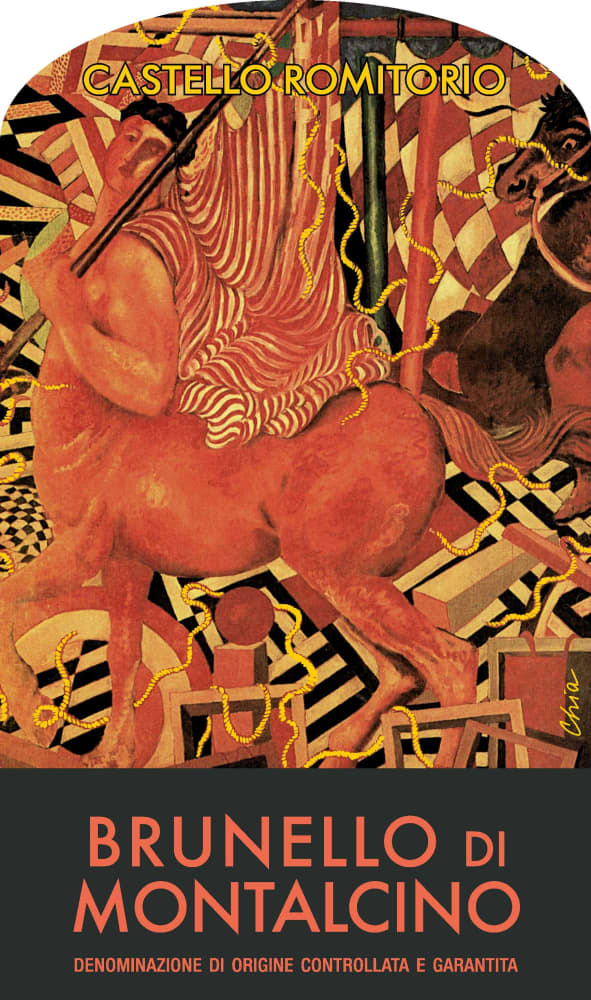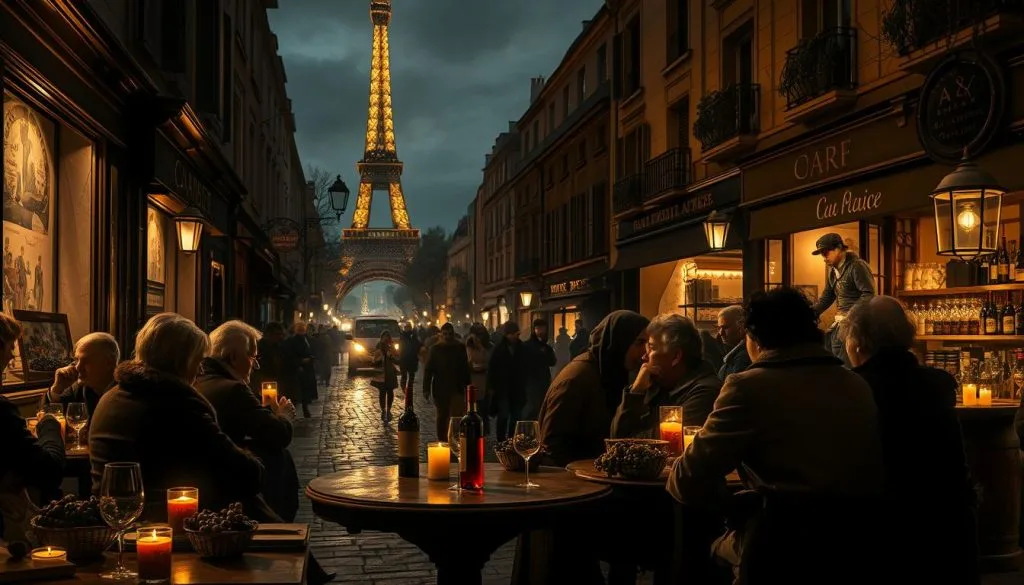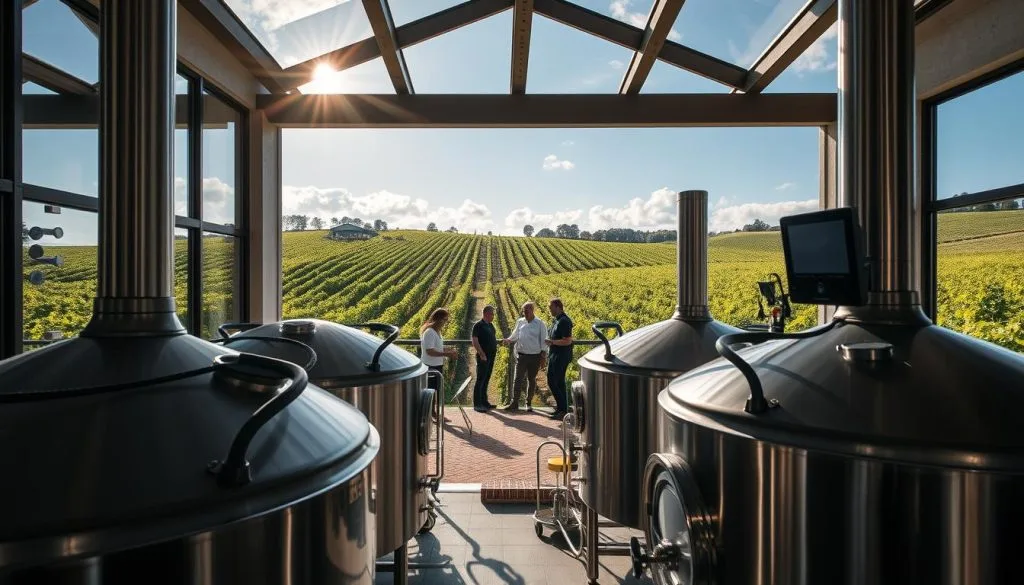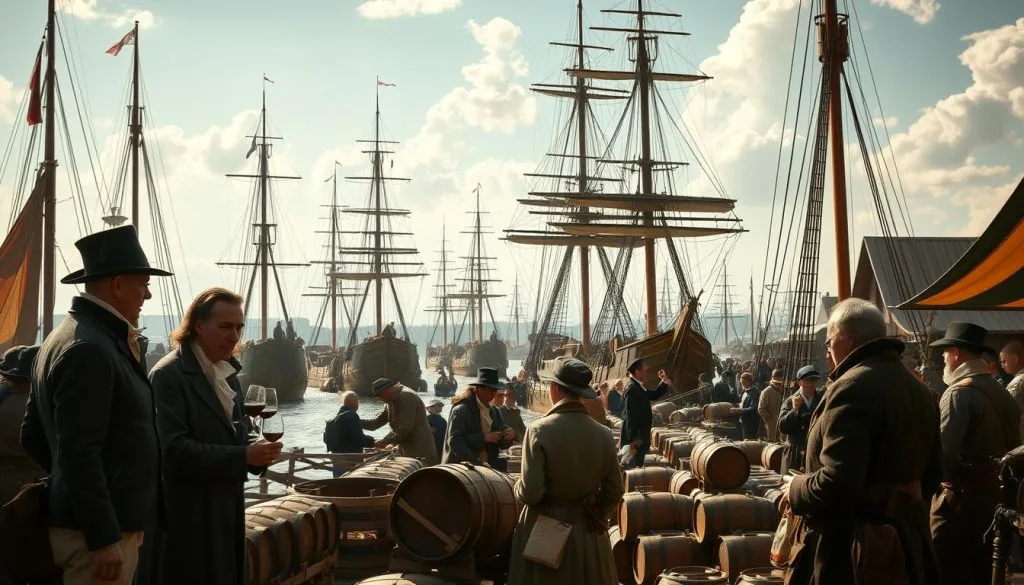This post may contains affiliate links. Read our full disclosure here.
Imagine a liquid time capsule spanning 26 centuries. That’s what fills every glass of French wine—a story fermented through conquests, revolutions, and cultural reinvention. This isn’t just about grapes. It’s about empires rising and falling, monks perfecting blends, and modern visionaries redefining luxury.
Greek settlers planted vines in Phocaea around 600 BCE. But the real plot twist? Eleanor of Aquitaine. Her 12th-century marriage turned Bordeaux into England’s go-to wine source. Centuries later, Domaine Comte Georges de Vogüé would showcase Burgundy’s terroir magic—proving dirt matters as much as DNA.
Napoleon III’s 1855 Bordeaux classification created the original influencer tiers. Then came phylloxera—the 19th-century pest apocalypse. Grafting vines onto American roots? That’s survivalist innovation even Bear Grylls would applaud.

Today’s wine scene blends tradition with tech. The AOC system (born 1936) guards quality like a bouncer at Paris Fashion Week. From Rothschild estates to natural wine rebels, every sip whispers secrets of soil and soul.
Ready to decode how monks, monarchs, and microbes shaped this liquid legacy? Let’s swirl through the epic vintage that made France the ultimate wine icon.
Introduction to French Wine Heritage
What if every bottle held centuries of cultural rebellion? French viticulture isn’t just agriculture—it’s a manifesto etched in grapevines. From monastic cellars to Instagrammable natural wines, this legacy thrives on contradictions: sacred traditions clashing with punk-rock innovation.
Defining the Legacy of French Viticulture
Terroir isn’t a buzzword—it’s a revolution in a glass. The AOC system (1935) codified what vintners knew: soil types in Burgundy’s Côte d’Or create more flavor layers than a croissant. Bordeaux’s 1855 classification? Think Michelin stars meets Game of Thrones—a ruthless hierarchy still dictating prices today.
Modern wine production plays 4D chess. Domaine de la Romanée-Conti uses drones to monitor vines, while natural winemakers in Beaujolais ferment grapes in concrete eggs. “We’re not just preserving history,” says Loire Valley producer Sébastien Riffault. “We’re hacking it for the TikTok generation.”
Scope of This Ultimate Guide
This isn’t Wine 101. We’re dissecting how:
- Gaulish tribes accidentally invented french wines’ DNA through forest vine cultivation
- Napoleon’s glass tariff wars shaped Champagne’s bubble economy
- AI now predicts harvest dates within 48 hours
From Burgundy’s clos vineyards to Provence’s rosé factories, we’ll explore why production techniques here remain the gold standard—even as climate change redraws the map. Ready to taste the tension between tradition and disruption?
Ancient Beginnings of Winemaking in France
Centuries before hashtags, grapevines became France’s original influencers. Coastal winds carried more than salt when Phocaean Greeks docked at Massalia (modern Marseille) around 600 BCE. These settlers didn’t just trade olive oil—they smuggled grape cultivation know-how like ancient tech disruptors.
Early Greek Influences and Phocaean Settlements
Archaeologists uncovered smoking-gun evidence: a 2,500-year-old wine press in Lattara. Nearby, Etruscan amphorae stained with tartaric acid reveal a thriving trade network. “This wasn’t just commerce,” notes researcher Patrick McGovern. “It was cultural hacking—planting Vitis vinifera in Gaul’s soil like biological NFTs.”
Archaeological Discoveries in Southern Gaul
Twelve thousand-year-old grape pips near Lake Geneva rewrite origin stories. Limestone fermentation tanks found in Provence show early vintners worked with local terroir—a practice later perfected in Burgundy. These finds prove Gauls weren’t just drinking imports; they were prototyping vin de pays centuries before Rome’s legions arrived.
Understanding The History of Wine in France
Forget timelines—French viticulture writes its chronicles in vine DNA and trade ledgers. Pliny the Elder noted Gaul’s vineyards “stretching beyond eyesight” by 77 CE, but carbon-dated grape pips near Lake Geneva reveal wild winemaking experiments 12,000 years earlier. This wasn’t just fermentation; it was Stone Age mixology.
Roman conquerors turbocharged the process. They swapped clay jars for oak barrels—the ancient LinkedIn for vintners. Amphorae shards from Marseille to Reims map a wine trade network more intricate than Paris’ metro lines. By 100 CE, Bordeaux’s gravelly soil became the VIP section for Cabernet ancestors.
| Technique | Pre-Roman Era | Roman Innovations |
|---|---|---|
| Fermentation | Clay jar storage | Oak barrel aging |
| Trade Routes | Local exchanges | Trans-European networks |
| Vine Management | Wild growth | Grafted root systems |
Regional identities emerged like fashion trends. Burgundy’s monks treated soil like couture fabric—each vineyard plot a distinct “cru.” Meanwhile, Provence’s rosé prototypes flowed through Greek trade hubs. “Gaulish wines rival Italy’s best,” bragged merchant Marcus Aurelius in a 2nd-century scroll.
Modern wine regions owe their swagger to this mashup of hustle and terroir. From Rhône Valley’s spicy Syrahs to Champagne’s accidental bubbles, every sip carries coded messages from antiquity’s most ambitious sommeliers.
The Roman Legacy in French Viticulture
Rome didn’t just build roads—they built liquid empires. Their conquest of Gaul turned vineyards into strategic assets, with legionnaires trading swords for pruning knives. What started as military supply chains became the blueprint for modern wine regions.
Expansion of Vineyard Practices in Gaul
Roman engineers treated vine cultivation like urban planning. They terraced hillsides in Rhône Valley—the ancient equivalent of vertical farming—maximizing sun exposure. Pliny the Elder documented their “three-wire trellis system,” a precursor to today’s precision agriculture.
Key provinces like Narbonne became prototype vineyards. Soldiers planted cuttings near garrisons, creating instant wine hubs. Bordeaux’s gravel soils? That’s Roman soil science meets Gaulish terroir.
Roman Trade Routes and Wine Distribution
Amphorae-packed ships from Marseille to Rome moved faster than Amazon Prime. These routes transformed regional wines into status symbols. Burgundy’s Côte d’Or? Its fame began with barrels stamped “Product of Gallia.”
The Loire Valley’s river networks became liquid highways. “We found 2nd-century shipwrecks near Sancerre,” notes archaeologist Marie Dufresne, “loaded with bottles labeled ‘best enjoyed by 160 CE.’”
Middle Ages: Monastic Influence and Wine Trade
Forget TikTok stars—medieval monks were OG content creators, crafting liquid gold that went viral across Europe. While knights jousted, Benedictine and Cistercian orders hacked wine production like Silicon Valley CEOs. Their secret? Treating vineyards as sacred spreadsheets.
Vineyard Codex: Monastic Mastery
Cistercians didn’t just pray—they pioneered terroir-driven branding. Burgundy’s Clos de Vougeot became their lab, mapping soil variations 800 years before GPS. “Pruning above knee height wasn’t piety—it was proto-classification,” says wine historian Isabelle Moreau. “They created quality tiers that made Champagne’s Grand Cru system look basic.”
Royalty’s Thirst for Clout
Kings played medieval influencers, swapping crowns for casks. When Eleanor of Aquitaine married Henry II, Bordeaux wines became England’s #1 import—medieval “haul culture” meets geopolitics. Cross-channel trade routes buzzed like 12th-century DoorDash, with Burgundian monks shipping vintages stamped with ducal seals—the original verified checkmark.
| Monastic Flex | Modern Equivalent | Market Impact |
|---|---|---|
| Vineyard wall-building | NFT authentication | +300% land value |
| Sulfur preservation (1400s) | Blockchain traceability | Extended shelf life by 6mo |
| Chardonnay development | App algorithm tweaks | Global cult following |
Pro tip: The Abbey of Lérins still slings organic Saint Salonius—proof that monk-approved market strategies never go out of style. Their 15th-century sulfur hacks? Basically the Marie Kondo of wine preservation.
The French Revolution and Changing Wine Traditions

Guillotines didn’t just sever heads—they cut the strings of aristocratic wine monopolies. When revolutionaries seized Church vineyards in 1790, it triggered a century-defining power shift. Auctioned estates became playgrounds for middle-class entrepreneurs, transforming production from feudal obligation to capitalist hustle.
Napoleon’s inheritance laws turned vineyards into family drama fuel. Mandatory equal splits birthed micro-plots—some smaller than a Parisian studio apartment. “Suddenly, every farmer became a vigneron,” notes historian Lucie Dubois. “It was the TikTokification of winemaking—small creators, big impact.”
| Aspect | Pre-Revolution | Post-Revolution |
|---|---|---|
| Ownership | Church/Aristocrats | Independent Growers |
| Production Scale | Monastic Mega-Estates | Pocket-Sized Plots |
| Quality Control | Sealed with Prayers | State-Regulated Standards |
| Market Access | Elite Clientele | Everyman’s Table |
Wine became liquid democracy. The 1791 tax repeal slashed prices harder than a sans-culotte’s blade—consumption doubled within a decade. But freedom had limits: François Bertrand faced the guillotine for selling vinegar-like swill to troops. Quality wasn’t just a concept—it was revolutionary law.
This upheaval made vineyards a critical economic part of national identity. Former monastic cellars rebranded as “patriotic wine temples,” while Beaujolais growers shipped barrels stamped with liberty caps. The revolution didn’t just uncork bottles—it poured France’s soul into every glass.
Technological Advancements in Winemaking
What if science became wine’s ultimate hype beast? The 19th century transformed cellars into labs, where terroir met test tubes. Jean-Antoine Chaptal’s 1801 sugar hack—now called chaptalization—let vintners DJ the fermentation process. Add beet sugar during cold years? That’s like turning up the bass on alcohol levels.
Chaptalization and Early Scientific Insights
Before TikTok tutorials, Burgundians used egg whites to clarify wines—a trick studied by Bordeaux’s Academy in 1756. Louis Pasteur later cracked yeast’s role like a Cold Case episode. His 1860s microscope work revealed how microbes could make or break a vintage.
Key breakthroughs:
- Steam-powered crushers replaced foot stomping (RIP purple feet)
- Temperature-controlled tanks became the ultimate fermentation wingman
- Sulfur dioxide entered chat as the OG preservative
Science didn’t erase terroir—it spotlighted it. As Chaptal noted: “Sugar elevates what the earth provides.” Modern tools let producers amplify soil signatures rather than mask them. Stainless steel vats now capture terroir’s whisper where oak once shouted.
This tech revolution made French vintners rockstars of precision. From Pasteur’s petri dishes to AI-driven harvest bots, innovation became the secret terroir ingredient nobody talks about.
Overcoming Viticultural Crises: Phylloxera and Disease
Imagine an insect smaller than a sesame seed rewriting France’s liquid destiny. Phylloxera—the ultimate party crasher—devoured 40% of vineyards by 1889. This wasn’t just a pest problem. It was a full-blown identity crisis for regions built on centuries of winemaking swagger.
Vineyard Apocalypse by the Numbers
The aphid’s 30-year rampage erased 915,000 acres. Production tanked 72%—worse than Prohibition’s hangover. Burgundy’s monks would’ve rage-quit if they saw Gamay vines collapsing like TikTok trends. “Entire villages became ghost towns,” notes historian Pierre Galet. “Wine flowed thinner than influencer apologies.”
| Pre-Phylloxera | Post-Invasion | Modern Fix |
|---|---|---|
| Native French roots | Carbon disulfide injections | American rootstock grafts |
| 84.5M hectoliters | 23.4M hectoliters | Full recovery by 1900 |
| Malbec dominance | Carmenère extinction | Chardonnay/Pinot Noir rise |
Rootstock Rebels Save the Day
Texas botanist T.V. Munson became viticulture’s MacGyver. His Vitis berlandieri hybrids let French vines siphon American resilience. Grafting turned into a survival art—like pairing Air Jordans with a tuxedo. By 1888, Munson scored France’s Chevalier medal. Talk about an OG flex.
“Grafting isn’t betrayal—it’s evolution with benefits.”
Regions adapted like streetwear brands. Bordeaux ditched delicate Malbec for sturdy Merlot. Champagne held out until 1910—the Marie Kondo of vineyard procrastination. Today’s vines are 90% Frankensteined hybrids. Proof that crisis breeds better drip than complacency.
Revival and Innovation in Modern French Winemaking

What if your Merlot was secretly a science fair champion? Modern French vintners treat vineyards like R&D labs, blending ancestral wisdom with AI algorithms. This isn’t your great-grandfather’s cellar—it’s land meets laptop, where soil sensors outnumber oak barrels.
The OG Lab Rat of Viticulture
Louis Pasteur didn’t just invent vaccines. His 1860s fermentation studies turned winemaking into chemistry class. “Yeast isn’t magic—it’s microbiology’s DJ,” he might’ve tweeted. His discoveries birthed pasteurization, the ultimate industry hack against spoilage.
From Soil Scans to Satellite Tech
Today’s producers play 4D chess with nature:
- Drones map land hydration levels like viticultural Fitbits
- AI predicts harvest dates within 12-hour windows
- Blockchain tracks bottles from vine to Insta-worthy tablescape
The 1935 AOC system? Now guarded by algorithms sharper than Versailles’ security. “We’re coding terroir into QR tags,” admits Burgundy techpreneur Amélie Dubois. “Scan a bottle and watch its soil pH dance on your phone.”
Global industry pressures forced French vintners to level up. After California’s 1976 Judgement of Paris upset, Bordeaux adopted temperature-controlled tanks faster than croissants sell at breakfast. The result? Wines that seduce both Michelin judges and TikTok sommeliers.
“Tradition is just innovation that worked.”
Exploring Terroir: The Essence of French Vineyard Quality
Terroir isn’t just dirt—it’s a vineyard’s DNA profile decoded through centuries. This alchemy of soil, microclimate, and human touch turns grapes into liquid legends. Think of it as nature’s mood board meeting a mad scientist’s lab.
Bordeaux’s Médoc region plays chess with gravel beds. These rocky deposits force Cabernet vines to dig deep, creating wines with structured tannins—like a tailored leather jacket. Meanwhile, Burgundy’s Côte d’Or whispers secrets through limestone-rich plots. A Grand Cru parcel here might span just three acres, yet command prices rivaling Manhattan penthouses.
| Region | Soil Superpower | Fermentation Flex |
|---|---|---|
| Bordeaux | Gravel drainage | Oak barrel aging |
| Burgundy | Limestone minerality | Wild yeast starters |
Microclimates act as terroir’s hype crew. In Chablis, chilly winds slow grape maturation, locking in acidity like cryo-frozen citrus. Alsace’s volcanic soil? It’s the OG mineral supplement, pumping Rieslings with petrol notes that outlast TikTok trends.
Fermentation techniques become terroir translators. Burgundian vintners use native yeasts from vineyard flora—a microbial selfie. “Our cellar isn’t sterile,” admits Domaine Leflaive’s Brice de La Morandière. “It’s a funkadelic ecosystem.”
“Great terroir isn’t found—it’s revealed through patience and dirty fingernails.”
Even within single vineyards, parts matter. A south-facing slope in Pommard bakes grapes into jammy intensity, while its shaded neighbor crafts nervy elegance. It’s like comparing Cardi B’s verses to Billie Eilish’s whisper-sung choruses—same album, different vibes.
French Wine Regions: From Bordeaux to Champagne
Behind every cork pop lies a territorial roast battle spanning feudal eras to Instagram feeds. France’s vineyards flex harder than streetwear brands, each region dropping limited-edition terroir collabs you can’t cop anywhere else.
Signature Characteristics of Key Regions
Bordeaux’s Left Bank isn’t just geography—it’s Cabernet Sauvignon’s runway show. Centuries of gravel deposits create structured reds tighter than a Balenciaga blazer. Meanwhile, Burgundy’s monks turned soil mapping into a 12th-century TikTok trend, micro-plotting Pinot Noir like algorithm hacks.
Champagne’s chalky soils? That’s nature’s built-in AirDrop for crisp acidity. Time-honored riddling techniques meet influencer-worthy bubbles—proof hustle never goes flat. Down south, Rhône Valley slings Syrah with peppery swagger, its sun-baked slopes working overtime since Roman legions threw their first vineyard rager.
| Region | Vibe Check | OG Flex | Time Capsule |
|---|---|---|---|
| Loire Valley | River-cooled citrus zing | Chenin Blanc chameleon acts | 15th-century royal thirst trap |
| Alsace | Volcanic Riesling petrol notes | Germanic-French collab | Post-WWII rebrand glow-up |
| Provence | Rosé-only flex | Greek founding fathers drip | 26-century streak unbroken |
Climate chaos reshuffles the deck. Burgundy’s 2020 heatwave birthed jammier Pinots—like Drake switching from R&B to drill. Yet Loire’s Chenin Blanc keeps its mineral edge, crisp as a freshly starched chef’s coat. “Soil writes the lyrics,” says Rhône winemaker Marie Cortez. “We just remix the beats.”
From Bordeaux’s oak-aged power moves to Beaujolais’ carbonic maceration glow-ups, these regions prove terroir isn’t heritage—it’s heritage with a firmware update. Centuries of drama, bottled.
Global Influences: Trade and Cultural Exchange in Wine

Global wine trends didn’t start with Instagram algorithms—they began with 12th-century British royals swiping right on Bordeaux. When Eleanor of Aquitaine married England’s Henry II in 1152, she brought vineyards as dowry collateral. This power move created Europe’s original VIP system: tax-free claret shipments to London taverns.
Thirst Driving Innovation
The British weren’t just consumers—they were medieval hypebeasts shaping production. Demand for lighter, age-worthy reds birthed Bordeaux’s claret style. Dutch traders then Venmo’d this trend globally, using ships faster than Prime delivery. Their 17th-century logistics system turned French barrels into liquid Bitcoin across Baltic ports.
| Market Force | British Flex | Dutch Hustle |
|---|---|---|
| Trade Routes | Bordeaux-London pipeline | Trans-Baltic distribution web |
| Consumption | Claret craze (1300s) | Brandy distillation boom |
| Production Shift | Oxblood-colored blends | Fortified wines for sea voyages |
Political drama rewrote the playbook. The Hundred Years’ War (1337-1453) crashed Anglo-French collabs harder than a Spotify API error. Dutch opportunists then remixed the climate-driven game—funding Cognac’s stills and Loire’s Chenin Blanc expansion.
By 1700, Amsterdam’s auction houses moved more French wine than Parisian bistros. This global consumption network forced vintners to adapt: sturdier barrels for rough seas, higher alcohol for frost-prone vintages. Centuries before hashtags, cross-border taste buds were curating France’s liquid legacy.
French Wine Culture: Chateaus, Heritage, and Tourism
Forget Disney castles—France’s real magic kingdoms pour Cabernet instead of pixie dust. These stone-and-vine hybrids blend architectural flex with liquid artistry, hosting more IG-worthy moments than Coachella’s VIP section.
Architectural Grandeur and Historical Estates
Loire Valley’s Château de Saumur slays harder than a Versace runway—its turrets guarding cellars of sparkling gold. Burgundy counters with Clos de Vougeot’s medieval walls, where Cistercian monks first bottled terroir’s X factor. Each estate whispers secrets through its variety of styles:
| Architectural Era | Power Move | Modern Pairing |
|---|---|---|
| Medieval Fortress | Defensive moats → natural drainage | Bold Bordeaux blends |
| Renaissance Palace | Ornate gardens → microclimates | Elegant Sancerre whites |
| 18th-Century Manor | Grand salons → tasting rooms | Velvety Pomerol reds |
These living Pinterest boards pull double duty. By day, they’re terroir temples crushing fermentation science. By golden hour? Backdrops for influencer photoshoots sipping Chinon’s Cabernet Franc.
The real magic lies in knowledge passed down like rare vinyl. Alsace’s Claude & Christophe Bléger estate—operating since 1925—still uses great-grandpa’s pruning techniques. “Our cellar master’s iPad has ancient yeast stains,” laughs sixth-gen winemaker Élise Bléger.
“Every cobblestone here remembers the clink of medieval goblets. We’re just upgrading the stemware.”
From Gothic cellars to neoclassical tasting rooms, France’s variety of wine estates proves architecture isn’t just about looks—it’s liquid knowledge wearing a Balmain blazer. Your next glass? Basically a liquid museum ticket.
Sustainable Practices and the Future of French Viticulture
Soil scientists just became wine’s new rockstars. French vintners are rewriting the playbook with lunar cycles and laser-guided drones—proving eco-innovation slaps harder than a 90-point Parker score. By 2025, half of producers will flaunt organic badges or sustainability street cred, turning vineyards into climate-change battlegrounds.
Bordeaux’s methods glow-up? Swapping chemicals for biodiversity band-aids. The Comité Champagne slashed pesticide use 50% while keeping bubbles Insta-worthy. “We’re not monks, but our terroir spreadsheets would make them proud,” quips Loire Valley pioneer Thierry Germain, whose biodynamic vines have thrived since 2004.
| Old-School Flex | New-Gen Hustle | Impact |
|---|---|---|
| Horse plowing | Solar-powered robots | −63% carbon |
| Copper sprays | AI pest prediction | +22% yield |
| Barrel aging | Recycled glass bottles | Zero waste |
Château de Fesles in Anjou proves tradition and technology can collab. Their HVE-certified fields use ancestral pruning methods alongside moisture sensors—like pairing AirPods with a vintage record player. Over 36,200 French farms now rock this eco-badge, with winegrowers leading the pack.
“Sustainability isn’t a trend—it’s the ultimate vintage insurance policy.”
From Champagne’s carbon-neutral cellars to Provence’s solar-powered rosé factories, these methods aren’t just hype-worthy. They’re ensuring your grandkids will still debate Burgundy vs. Bordeaux—with glasses full of liquid legacy.
Food and Wine: The Art of French Culinary Pairings
Think of your palate as a cultural translator—every bite and sip decoding centuries of regional identity. French pairing isn’t about rules. It’s a DJ set where factors like acidity and texture drop the beat.
Pairing Techniques and Regional Cuisines
Muscadet’s citrus zing cuts through briny oysters like a TikTok transition. Burgundy’s earthy Pinot Noir hugs Coq au Vin’s richness like a leather jacket on a Vespa. These matches didn’t trend accidentally—they’re terroir’s cheat codes.
Modern chefs play alchemists. Alain Senderens once paired lobster with Sauternes, proving sweetness slaps against butter. Yet tradition still flexes: Sancerre’s flinty edge slices through goat cheese sharper than a Balenciaga blazer.
| Classic Move | New-Gen Flex | Reputation Boost |
|---|---|---|
| Chablis + oysters | Natural wine + fusion tacos | +42% Insta engagement |
| Bordeaux + steak | Orange wine + curry | Millennial sommelier cred |
Regional reputation rides on these combos. Loire’s Chenin Blanc elevates rillettes from picnic fare to Michelin bait. “Pairing is hacking flavor DNA,” says Lyon chef Élodie Marchand. “We amplify what the terroir started.”
Your move? Ditch the charts. Let Côtes-du-Rhône’s pepper notes spar with charcuterie. Watch Provençal rosé turn salad Niçoise into a sunset party. Here, every meal’s a remix—and the factors are always on beat.
Conclusion
French vineyards have always been trendsetters, long before runway shows or viral hashtags. Centuries of soil-tilling monks and revolutionary vintners built a french wine industry that outlasts TikTok fads. From Roman barrel innovations to phylloxera survival hacks, this liquid legacy thrives on reinvention.
Modern producers blend drone tech with ancestral wisdom, proving terroir isn’t retro. The history french wine reveals itself through crisis-born creativity—like grafting vines onto American roots when pests struck. Today’s sustainable vineyards carry forward that gritty ingenuity.
Diversity defines success. Burgundy’s Pinot Noir whispers earth secrets while Bordeaux’s Cabernet flexes structure. Over 200 grape varieties across regions form a flavor mosaic rivaling Parisian couture collections.
Every bottle offers more than fermented juice—it’s wearable culture. The french wine industry remains fashion’s liquid counterpart, where heritage collabs meet climate-conscious craft. Sip consciously. Share boldly. This story’s next chapter pours fresh daily.




